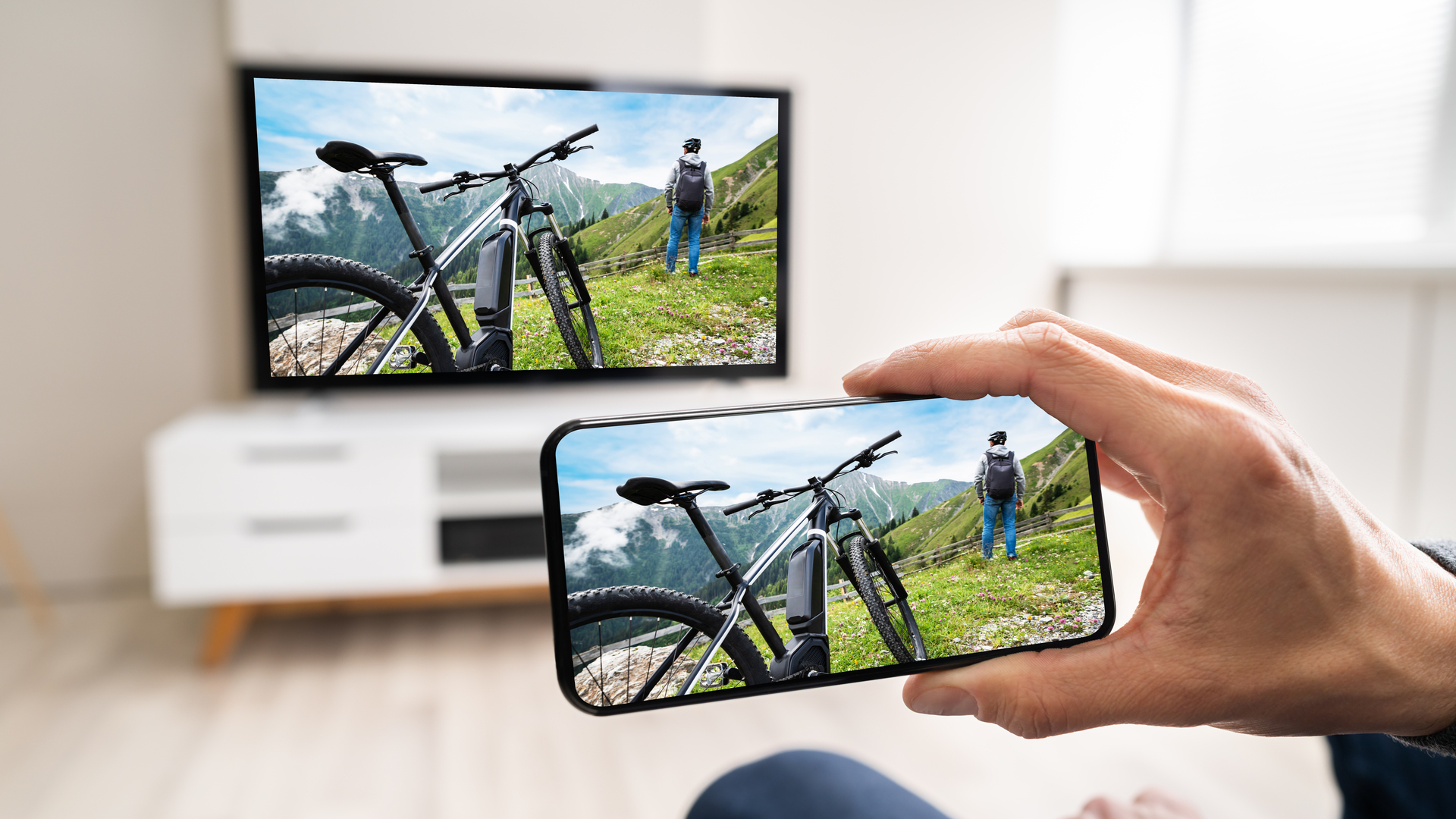Screen synergies: How a common manufacturer brings your TV and phone closer together
What can smartphones and smart TVs teach us about IoT? More than you'd think.

The Internet of Things (IoT) is incredibly convenient. The ability to control everything in our homes from our smartphone feels like something from the realm of science fiction. We find ourselves wondering quite frequently how we ever lived without such creature comforts in the past.
Smart lights that operate on a customizable schedule. Home security systems that send push notifications straight to your phone. Thermostats that allow you to control the temperature in each individual room of the house.
It's amazing...but it's also kind of a mess. Some vendors and manufacturers have made a token effort at interoperability. But many smart devices are still designed as if each is its own ecosystem.
A fragmented mess of apps

How many different 'smart' apps do you have on your phone?
You probably have one for your lights, that's a given. And one for your smart speakers. And another for your fridge. And another for your thermostat. And another for your smoke detectors. And another for your coffee maker. And another for your laundry room. And…
You get the idea.
Some of you are probably about to protest that there is standardization! You can control your smart tech through your smart home hub! Through Google Assistant, or Amazon Alexa, or Apple HomeKit — whatever's your poison.
And you're right.
You can do that, but your control is neither seamless nor flawless. It's incredibly rare to have access to the full functionality with which your smart devices were designed. Unless you want to start mucking about with something like IFTTT, you're probably going to be confined to basic voice commands.
Smart TVs are one area in which this problem is incredibly evident. In a perfect world, you'd be able to enjoy a seamless user experience across TV, tablet, smartphone, and PC. You'd be able to effortlessly shift from one to the other.
Unfortunately, we don't live in a perfect world.
Finding common ground
Imagine, if you will, the following scenario.
On your way back from work, you start watching a show on Netflix. When you get home, all it takes to start casting that show to your TV is a simple voice command. Eventually, you have to go to the bathroom.
You don't want to stop watching, so you grab your tablet. Don't be ashamed, we all do it. One has to wonder how many Facebook and Twitter posts were made from a porcelain throne.

Now, ordinarily you'd have to go through a pretty tedious process.
In this theoretical scenario, the show seamlessly begins streaming on your tablet. When you're done in the bathroom, you can swap back to your TV just as easily. Sounds pretty great, right?
This is actually something that's well within your power to do — all you need is a common manufacturer with an eye for innovation.
Synergy between screens

We'll use TCL as an example here. Specifically, the Xess A200 Pro, which recently launched in China. The 55-inch 4K system runs on Android TV, and automatically rotates itself depending on what you're doing.
Let's say, for instance, you're browsing Facebook and want to see your feed on the big screen. The TV will automatically switch from landscape to portrait mode, effectively becoming an extension of your smartphone. No need to do a bunch of tedious manual work or to blunder about attempting to find the TV on a list of castable devices.
The Xess also features a pop-up camera, which can be used for video chats and photos, and is equipped with a fitness AI known as COACH to help you keep yourself in shape as the lockdown drags on.
Perhaps best of all, it's designed to integrate seamlessly with existing smart home hubs, eliminating the need to fumble your way through multiple applications. This is the kind of functionality we need to see more of. Synergy and connectivity rather than siloed apps and chaos.
Cleaning up our connected future

No matter which way you look at it, smart home tech is pretty incredible. It's just a shame that there's often so little synergy between different devices and software platforms. In some cases — such as with home entertainment systems — this is a relatively simple issue to solve.
Still, that doesn't address the larger issue plaguing the minds and lives of the gadget-obsessed. There aren't many vendors who sell everything you'd find in a connected home. You're going to need to purchase products from at least a few different manufacturers, and there's no guarantee those products will be designed with interoperability in mind.
Still, TCL has taken a big step in the right direction. Perhaps if more brands follow their example, the Internet of Things won't be quite as much of a mess a few years down the line. Because at the end of the day, common manufacturer or not, a streamlined smart home experience is better for everyone.
Now if we could just sort out the nightmare of IoT security, we'd be golden.
Get all the latest news, reviews, deals and buying guides on gorgeous tech, home and active products from the T3 experts

For 25 years T3 has been the place to go when you need a gadget. From the incredibly useful, to the flat out beautiful T3 has covered it all. We're here to make your life better by bringing you the latest news, reviewing the products you want to buy and hunting for the best deals. You can follow us on Twitter, Facebook and Instagram. We also have a monthly magazine which you can buy in newsagents or subscribe to online – print and digital versions available.
-
 Strava isn’t just a fitness app anymore, and 2026 will prove it
Strava isn’t just a fitness app anymore, and 2026 will prove itAfter lawsuits, acquisitions and AI, Strava enters 2026 at a crossroads
-
 Beats turns a 2011 Travis Scott tweet into its most personal campaign yet
Beats turns a 2011 Travis Scott tweet into its most personal campaign yetDare To Dream revisits the rapper’s early ambitions while spotlighting Beats’ latest performance earbuds
